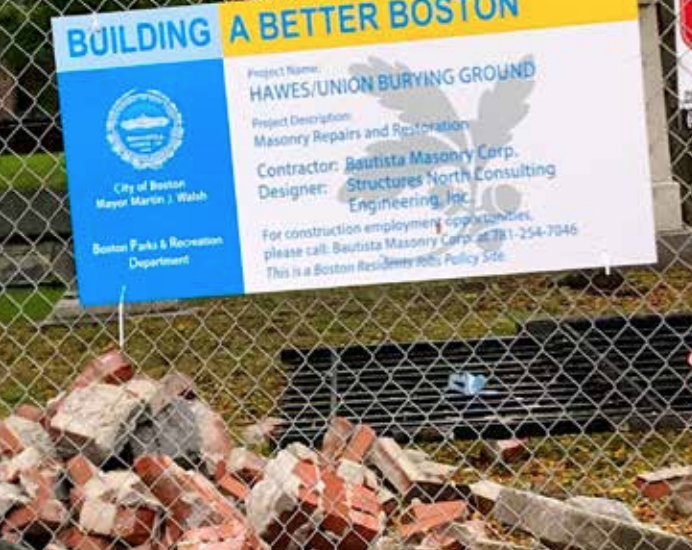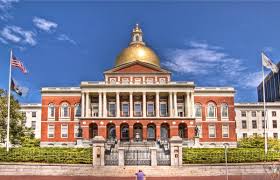As the brick and stone wall surrounding the Hawes/Union Cemetery on Emerson Street near L Street is being demolished, residents laying therein, such as the Thayer, Simpson, Read, Hammond, Burke and Blake families, who have been dying to get out, are now appearing in lines at Starbucks, Dunkin, the L Street Diner and Cumby’s looking at the specials according to ‘spooked’ neighbors. Just in time for Halloween 2018. Actually, the City of Boston has funded the reconstruction and restoration of the masonry containing the historic Burying Ground.
When South Boston was incorporated within the City of Boston in 1804, a proviso was made which stated three lots of land should be set aside for public use: a public market place, a school house and a burial ground. In 1816, John Hawes, a prominent South Boston landowner and benefactor, donated this parcel of land to be set aside as a burying ground. Historically and physically separate from the adjacent Union Cemetery, Hawes Burying Ground is the oldest graveyard in South Boston. John Hawes himself is entombed there. Even though it was not officially approved for use as a cemetery until 1821, the oldest gravestone marks the grave of Jonathan Spooner, 1817. The last stone, dated 1858, marks the grave of Elizabeth Smith.
A solemn row of graves separates Union Cemetery from the adjacent Hawes Burying Ground.
Adam Bent purchased the Union Burying Ground from the Warren Association Trustees in 1841. Bent then sold all but two small parcels to Samuel Blake who sold lots to individuals and families. The cemetery’s stones date from 1845-1886. Prominent Bostonians buried here include Cyrus Alger, whose iron foundry dominated South Boston’s industrial life during the mid-1800s.
If you see anyone, dressed in unfamiliar clothing, flitting around those locations on L Street, give them a warm South Boston greeting and perhaps offer to buy them a cup of coffee or latte’.










